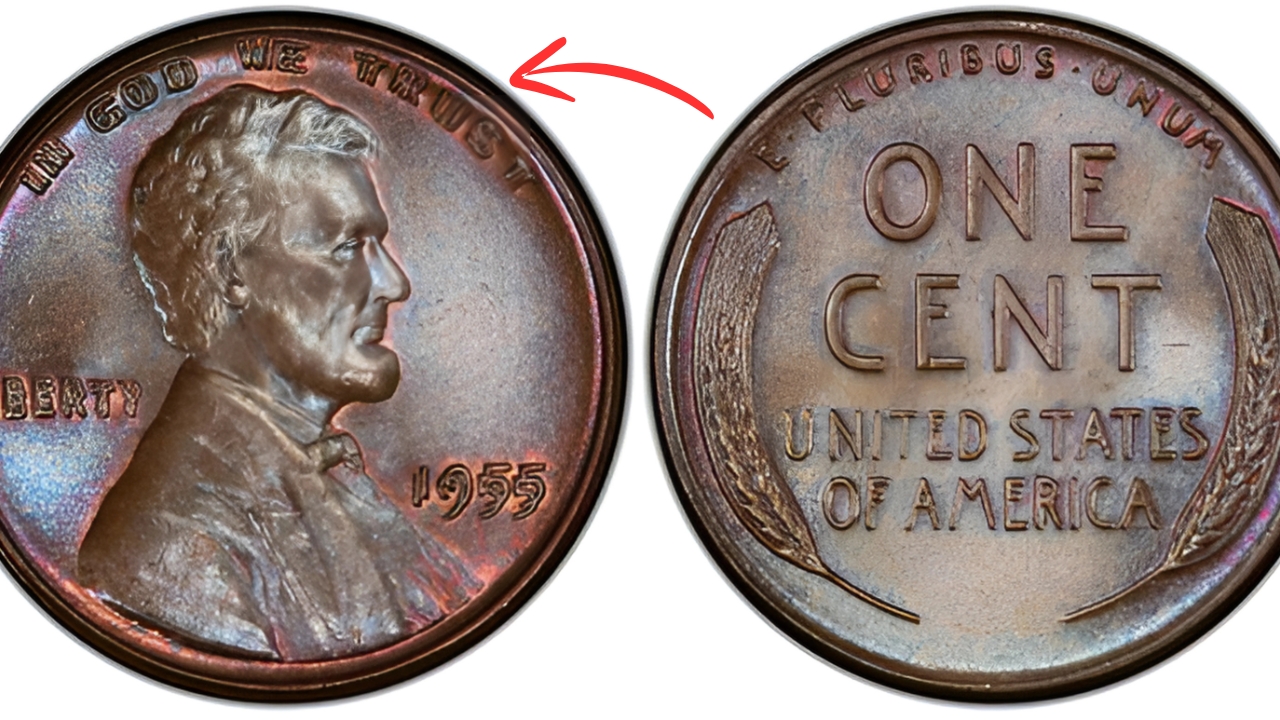Most of us don’t give a second thought to the humble penny. It jingles in our pockets, piles up in jars, or gets left behind in the cup holder of our car. But what if that little copper coin could actually be worth thousands—or even millions—of dollars?
While the claim that a penny could sell for $70 million might be pure myth, there are real, verified Lincoln cents that have fetched massive sums at auction. Some are historical oddities, others are the result of minting mistakes, and a few are just so rare that collectors will pay a small fortune to own one.
Let’s explore five incredibly rare pennies that could still be hiding in circulation—and learn how to spot them.
1. The 1943 Copper Penny: A Wartime Mistake Worth $1.7 Million
During World War II, the U.S. Mint made a temporary switch from copper to steel pennies to preserve copper for military use. But in 1943, a few copper blanks were accidentally left in the presses—resulting in roughly 40 copper pennies being struck that year.
These rare copper 1943 pennies are the crown jewels of Lincoln cent collecting. One sold for $1.7 million in 2010. Another sold for over $1 million in 2012.
How to spot one: Use a magnet—steel 1943 pennies will stick, copper won’t. Also look for the reddish-brown tone of copper instead of steel’s silver-gray finish. Watch out for fakes—many are just copper-plated steel or altered dates.
2. The 1944 Steel Penny: The Reverse of the 1943 Error
In 1944, the Mint returned to copper pennies. But, ironically, a few steel blanks from 1943 accidentally made their way into production. These 1944 steel cents are the reverse of the previous year’s error—and just as rare.
Only about 30 are believed to exist from all mints combined. One 1944-S steel cent sold for $373,750 in 2008, and values have only gone up since then.
What to look for: A steel penny dated 1944. These will stick to a magnet, unlike the standard 1944 copper cents.
3. The 1909-S VDB Penny: A Controversial Start for Lincoln Cents
The very first year of the Lincoln cent—1909—included a controversy. Designer Victor David Brenner placed his initials “VDB” prominently on the reverse, which sparked public backlash. The Mint quickly removed the initials, but not before 484,000 coins had been struck at the San Francisco Mint.
Today, the 1909-S VDB penny is one of the most famous rare U.S. coins. Circulated versions sell for $2,000–$2,500, while uncirculated examples can command $10,000 or more.
What to look for: Check the reverse bottom for the “VDB” initials and make sure there’s an “S” mintmark under the date.
4. The 1955 Doubled Die Penny: A Classic Error with Obvious Impact
If you’ve ever wanted to see an error with your own eyes, this is the one. The 1955 Doubled Die penny shows noticeable doubling in the date and lettering. About 20,000–24,000 made it into circulation before being caught.
Collectors love this coin not just for its value (up to $18,000+ in top condition), but also because the error is easy to spot without a magnifier.
How to tell: Look closely at “LIBERTY,” “IN GOD WE TRUST,” and the date—the doubling is bold and clear.
5. The 1969-S Doubled Die Penny: The Rarest of Modern Errors
Even rarer than the 1955 version is the 1969-S Doubled Die Obverse penny. With only about a dozen known examples, it’s one of the rarest modern U.S. coins.
One sold for $126,500 in 2008, and if another surfaced today, it would likely sell for far more.
What to look for: Doubling in the date and lettering, especially “LIBERTY” and “IN GOD WE TRUST.” Don’t confuse it with minor doubling—this one is significant, but subtle enough that most people miss it.
Where to Hunt for Rare Pennies
You don’t need to raid a museum or attend a high-stakes auction to find one of these gems. Many have been discovered in:
- Pocket change
- Old jars or piggy banks
- Inherited coin collections
- Bank rolls (coined the term “coin roll hunting”)
Even today, sharp-eyed collectors sometimes stumble upon valuable finds in the most unexpected places.
How to Identify and Handle a Potentially Valuable Penny
Found a penny that seems unusual? Here’s what you should do:
- Don’t clean it. Cleaning reduces value—sometimes drastically.
- Use a magnet and scale. This helps determine its metal content and authenticity.
- Check mintmarks and the year. Some combinations (like “S” mints from early years) are key.
- Get it professionally graded. Services like PCGS or NGC will confirm its authenticity and assign a grade based on condition.
- Research recent sales. Check reputable auction houses or numismatic databases to get a ballpark figure.
Table: Top 5 Valuable Pennies You Could Still Find
| Penny | Year | Mint Mark | Estimated Value | Key Features | Known Examples |
|---|---|---|---|---|---|
| 1943 Copper Penny | 1943 | P, D, or S | $100,000–$1.7 million | Reddish tone, doesn’t stick to magnet | ~40 |
| 1944 Steel Penny | 1944 | P, D, or S | $75,000–$375,000 | Silver-gray tone, magnetic | ~30 |
| 1909-S VDB Penny | 1909 | S | $2,000–$10,000+ | “VDB” on reverse, “S” mintmark | 484,000 minted |
| 1955 Doubled Die Penny | 1955 | None | $1,000–$18,000+ | Bold doubling in lettering and date | ~20,000–24,000 |
| 1969-S Doubled Die Penny | 1969 | S | $75,000–$126,500+ | Subtle but clear doubling on front text | ~12 |














